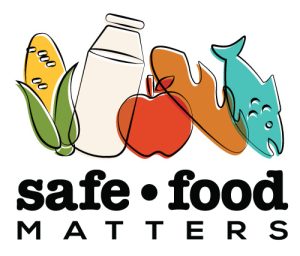Glyphosate is registered in Canada for spraying on the following “Crops of Concern” after the crops have started growing. Glyphosate is showing up in high levels in most of these crops, and our regulators know it.1
| WHEAT, BARLEY, OATS | CHICKPEAS |
| FLAX | LENTILS |
| MUSTARD | DRY BEANS |
| CANOLA (GM) | PEAS |
| SOYBEAN (GM) | FABA BEANS |
In Canada, the list of “Common food allergies and related disorders in Canada” includes many of these crops (which names wheat, rye and barley under “Gluten”).
Why are high levels showing up in most of these crops? These crops, prior to “physiological maturity”, are busy pushing nutrients (including minerals) into their seeds. Glyphosate is a chelator that binds with minerals. So if spraying occurs prior to physiological maturity (the time when the seed has been filled), the plant is still pushing minerals and glyphosate into the seed.
So who makes the call on the time to spray? The burden is put on the farmers. They are provided with label recommendations and guidelines from the manufacturers, provincial authorities, agricultural boards and grower associations 2 (“Guidelines”). In general, the Guidelines say “Spray when the seed moisture content is less than 30%”, because this 30% level is supposedly the time of physiological maturity.
This is a difficult task for the farmer. It is subjective, confusing and complicated. The farmer is told to look at criteria like the colour of the stems, the pods, figure out how much is dry, how many leaves have dropped, make indentations in the grain, determine if seeds rattle etc. etc. Sometimes the labels provide different direction than do the provincial authorities, boards or associations. Plus the plants in one field will often have different moisture contents depending on their location in the field; plants are more wet at the bottom of hills and in less windy spots. Weather (rain) also affects moisture content.
Also the Guidelines do not work for all crops. For example, some crops (indeterminate) continuously produce seeds in their growing stage, which means at one stage some seeds will be fully filled but the newer ones will not. The Guidelines here say to spray when there is evidence that two thirds of the plant has mature seeds, which means the other third is left to fill with glyphosate.
But the real problem is these Guidelines don’t assure safety. We have not seen one study that explains that spraying a plant at 30% seed moisture content allows safe levels of glyphosate to enter that plant.
The Guidelines are supposed to keep crops on side of Maximum Residue Limits (MRLs) of Canada, which are the legal limits of residues that Health Canada allows in or on our food. In Canada, MRL limits are not target levels set for safety: they simply reflect the levels the manufacturers require, resulting from their spraying trials in the field, to set their labels.
Health Canada indicates our sprayed foods are safe because Health Canada has run the numbers for the MRLs in its Dietary Exposure Evaluation Model, and the results are “far below the amounts that could pose a health concern”. We will look at Health Canada’s approach on dietary exposure in an upcoming piece.
So if neither the MRLs nor the Guidelines assure safe levels of glyphosate in our foods, what can we do? Pay attention to the crops of concern, and make safe food choices.
1.The Canada Food Inspection Agency has tested high levels in chickpeas, lentils, dry beans (kidney, mung) oats, wheat (especially bran) and barley, as set out in Poison Foods of North America. The US Food and Drug Administration’s 2017 Pesticide Monitoring Report indicates acid herbicides (including glyphosate) were food in 75% of oats, 34.3% of barley and 16.7% of wheat samples (p.31) (numbers for other Crops of Concern were not detailed).
2. For example, see these Guidelines on preharvest uses of glyphosate: Saskatchewan’s 2019 Guide to Crop Protection at 233; Manitoba’s Guide to Crop Protection 2019 (at 233); Alberta’s Crop Protection 2019 (at 155); Label 25344 for Roundup Transorb Liquid Herbicide at Product Label Search; The Preharvest Staging Guide for Roundup; Saskatchewan Pulse Grower’s Growing Pulses; Keep it Clean.

